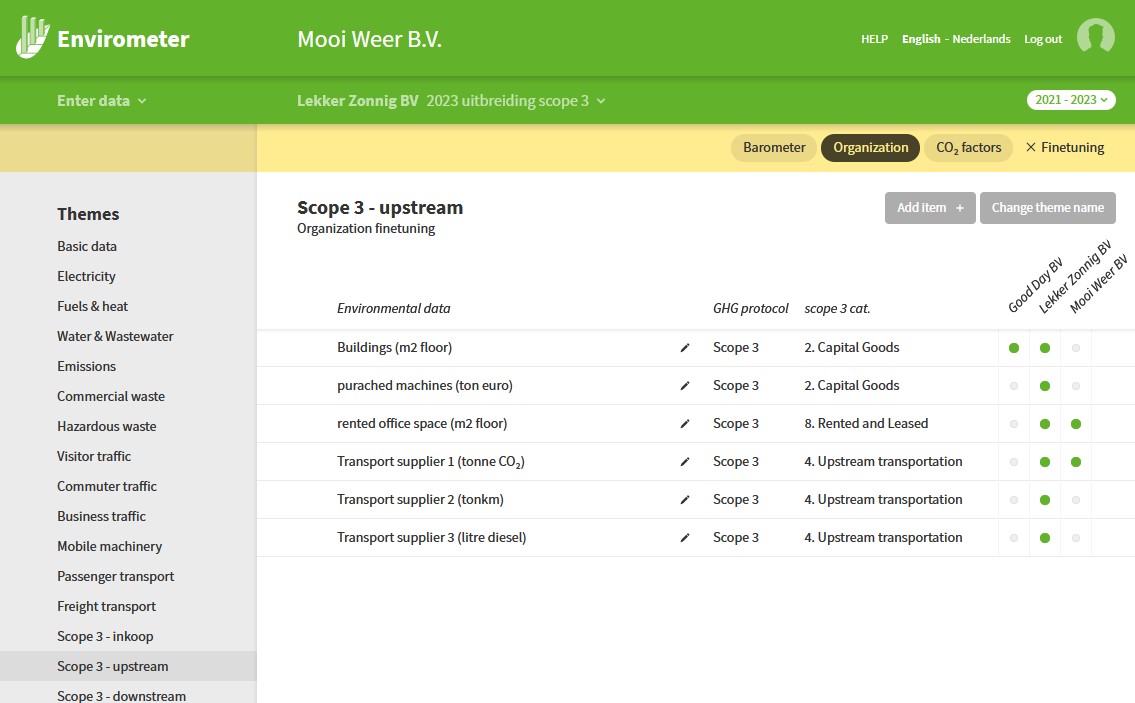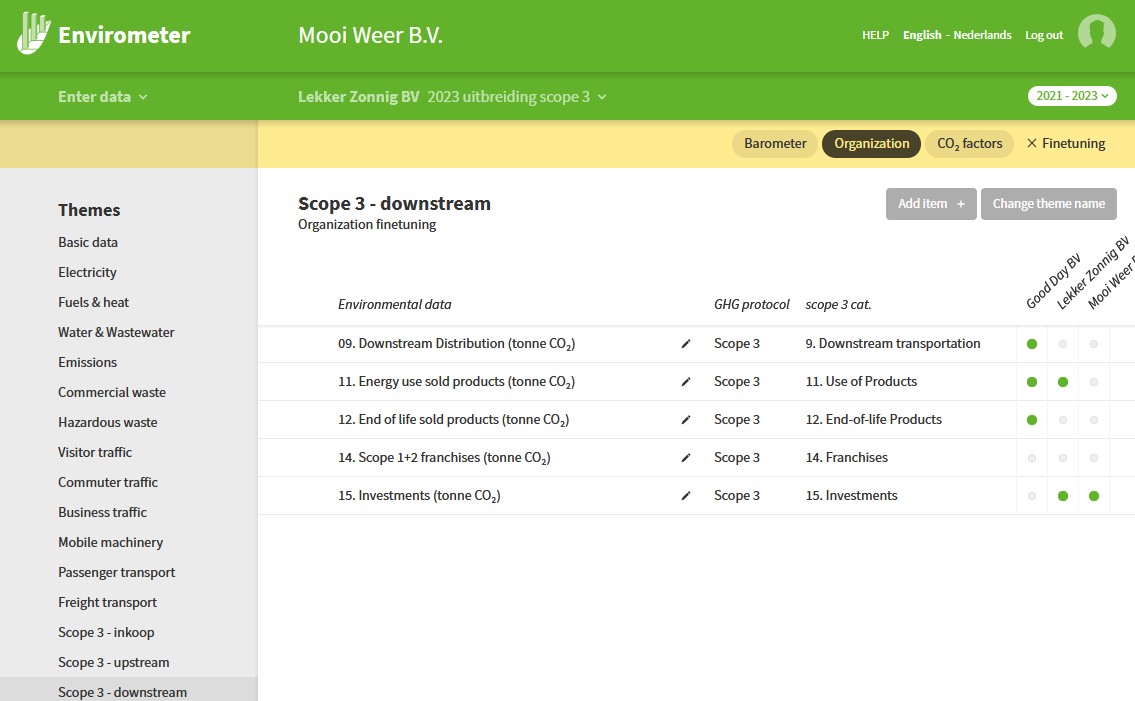Carbon footprint scope 3
This page consists of three parts:
- Draw up your footprint step by step
- Scope 3 in the Environmental Barometer
- Practical tips for adding scope 3
Draw up your footprint step by step
This table provides insight into the steps of making a carbon footprint. We adhere to the classification of the GHG Protocol that divides CO2 emissions into three scopes, with scope 3 consisting of 15 components. Start with your own business operations (scope 1, scope 2 and business travel). Expand with emissions in the chain (scope 3). If you want more explanation and examples, read the Stimular guide What to include in the carbon footprint””
The page Required data helps you fill in steps A and B.
Tips for scope 3:
- First determine which scope 3 categories are applicable and which are significant (screening) and only include the relevant categories here.
- It is possible to indicate scope 3 step by step. It is usually not possible to get everything sharp at once:
- Step A can be provided by any company
- Step B is also often possible, but more based on estimates
- Step C is fairly complex and usually requires input from an expert
- Step D requires calculations and cooperation in the chain to obtain data
- The delineation at step A corresponds to a footprint for the CO2 Performance Ladder level 3.
- Steps B to D are necessary for the CO2 Performance Ladder level 4 (qualitative) and level 5 (quantitative).
| Scopes and scope 3 categories | CO2-parameters | |
| A. Own business operations |
|
Available in the Envirometer |
| B. Supply chain: easily measurable components that you can influence |
|
Available in the Environmeter |
| C. Supply chain: raw materials / purchasing (upstream emissions) |
|
Add parameters based on, for example:
|
| D. Supply chain: other emissions (downstream emissions) |
|
Add parameters based on, for example:
|
Footnotes:
Scope 3 in the Envirometer
The previous paragraph gives advice on collecting data for scope 3. It also indicates which components are already by deafult available in the Envirometer. Below are some suggestions on how to add your own scope 3 components to the Envirometer.
- Use the scope 3 components that are already available, such as:
- business travel: declared kilometers, air travel and public transport.
- commuting
- visitor traffic
- freight transport: outsourced transport
- Calculate/estimate the CO2 emissions outside the Environmental Barometer for the missing scope 3 components (insofar as they are relevant to your company!). Choose/find a suitable way to calculate CO2 emissions per category. In our experience it is useful to use a spreadsheet to work with formulas.
- If you want to add the calculated scope 3 components to the Envirometer to complete the scope 3, you can work in two ways (or mix them):
- For each scope 3 category, create one item under the name of that category (e.g. “1. Purchase of goods and services”) with the unit “tons of CO2”. You then register the tonnes of CO2 (calculated per category from the previous step) in the Envirometer, without breaking it down further. (Second illustration at the bottom of this page)
- For each scope 3 category, you create multiple items that together form the CO2 emissions of that category. This method is suitable if the number of items is limited and you expect to be able to calculate the CO2 emissions of that category using the same items next time. (First illustration at the bottom of this page)
Practical tips for adding scope 3 in the Environmental Barometer
- There are three chapters available where you can freely add scope 3 items. The titles of these chapters can be changed under finetuning organization. The default titles are:
- Paper (& Raw Materials)
- Other chain emissions,
- Other chain emissions 2.
- For each item you add, you must indicate which scope 3 category it belongs to. If there are more items from that scope 3 category, their emissions will be summed (to be implemented expected september 2024).
- If you add an item, you must always attach a CO2 factor. If you choose tons of CO2 as the unit for an item; then set the CO2 factor of that item to 1000kg CO2/ton CO2. (See fine-tuning CO2-factors)
- If you want to add the category “Scope 3-5 Processing production waste” to your footprint, you can do this by assigning CO2 factors to the existing waste flows. The Environmental Barometer does not (yet) have any factors because there are currently no standard CO2 factors available that are in line with the GHG protocol. As soon as average CO2 factors for waste processing become available, we will include them in the Envirometer (expected: not before the end of 2025).

